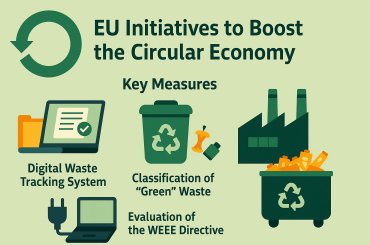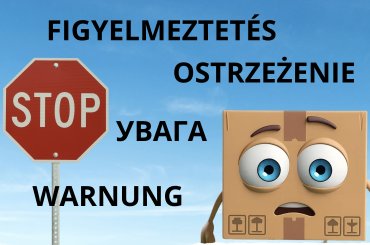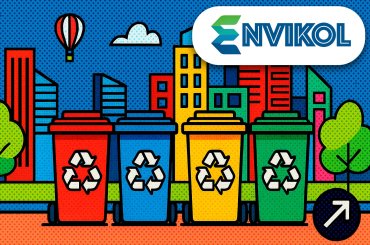Are the Bratislava citizens successful in the waste separation? If you wish to know the results of the latest waste analysis performed in cooperation with the below partners, read the press release of the organization INCIEN and watch our video-reportage to this issue.
Press release:
Analysis of the content of yellow and blue containers for separated waste in Bratislava
October 30th, 2019
An analysis of the content of yellow containers in Bratislava was performed during the year 2018, and its results show that the citizens of the Slovak capital do separate, however, for the improvement of the results they would need certain assistance. The analysis was performed by the Institute for Circular Economy o.z., in cooperation with the company Tetra Pak, a.s., organizations NATUR-PACK, a.s.,, OLO a.s. with participation of the representatives of the Bratislava municipality.
The organizers of the analyses decided to repeat the analyses in the year 2019 in the territory of Bratislava, and in addition to yellow containers they focused also to blue ones that serve for paper and paperboard waste. The analysis results confirmed that there is still a noticeable space for waste separation improvement in Bratislava.
45 volunteers from the Slovak branch of the company Pernod Ricard contributed to a great extent to the successful analysis performance as they assisted (after certain training) in the separation of the individual waste categories.
The analysis was aimed at investigation of the real composition of the yellow containers content. Such containers are installed in Bratislava for collection of plastic waste, beverage paperboard packaging (so called MCMs), metal packaging since the year 2018. Blue collection containers serve for collection of paper and paperboard waste. The proportion of impurities was investigated, as well as the ratio between the individual collected separated components and the proportion of packaging and non-packaging products among plastics.
The analyses of the separately collected waste components are of utmost importance for the improvement and increased effectivity of the separated waste collection, and also for sharing with the citizens of the most frequent mistakes to be avoided during the separation.
The yellow containers for collection of plastic waste, beverage paperboard packaging (MCM) and metal packaging originated from the residential area with apartment houses of the Ružinov district. The blue containers for collection of paper and paperboard waste originated from the district Staré mesto, a residential area with family houses. The waste collection was performed by the Bratislava municipal company OLO using the collection vehicles during the day of analysis.
The analysis of the yellow containers released that they contain up to 25.16 % of impurities, i.e. waste that do not belong into them. This is a significantly worse figure than in the year 2018 when the impurities reached 14.40 %. Thus, the separation effectiveness in the yellow containers is not satisfactory and there is a huge space for improvement. We have detected 6 % of the beverage paperboard packaging (MCM) in the yellow containers, 7 % of metal packaging and the resting 87 % was the plastic waste. These figures are better than in the past year.
The analysis of the blue containers has shown that they contain 16.12 % of impurities. In comparison with the yellow containers the proportion of impurities is lower, however, there is also a space for improvement in the paper separation. Moreover, paper is much more vulnerable to contamination by impurities or chemicals as plastic waste.
Waste separation by means of the yellow and blue containers has an important space for improvement in Bratislava. Marking of containers by new labels informing about the proper collection, that has already started, could support more effective separation of the individual waste components. A communication campaign could also help. The analyses have also a positive output – the Bratislava citizens already know that not only plastic waste, but also beverage paperboard packaging and metal packaging belong to the yellow containers.
Summary results of the analyses
PLASTICS
Sample size: 121.60 kg
The volunteers split the sample into the following commodities / components:
• plastics – packaging
• plastics – non-packaging
• beverage paperboard packaging (multilayer composite materials, MCM)
• metals
• impurities – materials that do not belong to the given container for separated waste (they belong to another container or to the collection yard)
Total mass | 121.60 kg | 100 % |
MIXED MUNICIPAL WASTE | 30.60 kg | 25.16 % |
Mass of the separated proportion (packaging + non-packaging), out of which: | 91.00 kg | 74.84 % |
PACKAGING | 86.50 kg | 95.05 % |
NON-PACKAGING PRODUCTS | 4.50 kg | 4.95 % |
PLASTICS | Mass (kg) | Mass (%) |
PACKAGING | ||
Beverage PET (from 0.1 up to 3 l) | 31.70 | 34.84 |
PET other than beverage PET (e.g. packaging of food, milk, dairy products, except of packaging of cosmetics and drugstore goods) | 3.60 | 3.96 |
Beverage plastics other than PET (e.g. packaging of energy drinks, but not milk and dairy products – it is not beverage, but foodstuff) (from 0.1 up to 3 l) | 0 | 0.00 |
Other than beverage plastics (except PET) incl. the packaging of flower pots intended for use only during sale and transport of plants, not for the entire life span of the plant | 0 | 0.00 |
Foils, packaging made of smooth foil, larger transparent packaging made of soft foil from delicacies, bubble foil, group packaging from mineral water etc. (except of tiny, single packaging for delicacies, candies, sweets and plastic bags regardless the wall thickness). TOTAL (ecomodulation not investigated) | 3.50 | 3.85 |
Smaller PACKAGING for delicacies, candies, sweets, plastic bags regardless the wall thickness. TOTAL (ecomodulation not investigated) | 20.40 | 22.42 |
Cups (from yoghurt, cottage cheese, butter, spreads). TOTAL (ecomodulation not investigated) | 3.80 | 4.18 |
Packaging from drugstore goods and cosmetics (without PET). TOTAL (ecomodulation not investigated) | 5.30 | 5.82 |
Packaging from drugstore goods (only PET), e.g. (packaging type of the same producer can differ, it is useful to check the brand; color is not decisive, only the label PET) | 2.20 | 2.42 |
Single-use packaging for meals, beverages and cups including their closures and lids if they have the same composition as the packaging made of the expanded PS | 0.70 | 0.77 |
Packaging made of PS (filling of the packaging, e.g. for electronic products) | 0.40 | 0.44 |
MIXTURE of packaging plastics not categorized elsewhere, e.g. without graphical and numerical labelling (sweets, delicacies) | 3.30 | 3.63 |
Single-use straws, cups incl. lids and closures, trays, plates, cutlery, stirrers, sticks for balloons | 0.20 | 0.22 |
NON-PACKAGING PRODUCTS | ||
MIXTURE of non-packaging plastic products not categorized elsewhere (plate baskets, balls, closet seats, toys, laminated maps, whole-plastic folders incl. metal rings etc., flower pots intended for the entire plant lifecycle) | 4.50 | 4.95 |
METALS | Mass (kg) | Mass % |
Beverage Al (from 0.1 up to 3 l) : | 4.40 | 4.84 |
Other than beverage Al (e.g. packaging of candles, fish can, yoghurt or cream lid etc., foodstuff packaging, alu-foil) | 0.40 | 0.44 |
Beverage packaging made of Fe (from 0.1 up to 3 l) : | 0.30 | 0.33 |
Other than beverage packaging made of Fe | 1.10 | 1.21 |
Paperboard based MULTILAYER COMPOSITE MATERIALS | Mass (kg) | Mass % |
PACKAGING | 5.20 | 5.71 |
PAPER
Sample size: 360 kg
The volunteers split the sample into the following commodities / components:
• paper – packaging
• paper – non-packaging products
• beverage paperboard packaging (multilayer composite materials, MCM)
• impurities – materials that do not belong to the given container for separated waste (they belong to another container or to the collection yard)
PAPER | Mass (kg) | Mass (%) |
Total mass | 353.70 | 100 |
MIXED MUNICIPAL WASTE | 57.00 | 16.12 |
PACKAGING | 231.30 | 65.39 |
NON-PACKAGING PRODUCTS | 65.40 | 18.49 |
| 7.30 | 2.03 |
| 0.90 | 0.25 |
| 0.8 | 0.22 |
| 2.70 | 0.75 |
CONCLUSIONS
The analysis released that Bratislava citizens know that beverage paperboard packaging, metal packaging and plastics belong to the yellow container. Some citizens throw the beverage paperboard packaging to the paper containers, that is not correct. Nevertheless, this represents only minimum proportion of the citizens.
The detected percent of impurities in the selected samples is more alarming: 25.16% in the case of plastics and 16.12 % in the case of paper. Such misplaced waste results also in the faster filling of the containers. Moreover, the mentioned proportion of inappropriately placed commodities and substances that do not belong to the collection container can result in contamination of the content, and the entire volume of a container – or even the collection vehicle – can be devaluated. It is necessary to place to the containers only the appropriate waste commodities.
RECOMMENDATIONS FOR THE YEAR 2019
By the termination of the analysis in the year 2018 the organizers listed the measures to be implemented in order to support the proper waste separation. The following steps are recommended as an output for the year 2019:
To continue with the labelling of the containers by instruction stickers.
The company OLO started to exchange the old stickers on the collection containers by the new ones. With regard to the fact that more than 75 000 collection containers are located in Bratislava the instant exchange at all containers would by quite demanding, financially and also operationally. Therefore the exchange is performed consecutively, and the organizers recommend to continue with this process.
To continue with the final sorting of the beverage paperboard packaging from the yellow containers, its further processing and declaring of the separated proportion in the official statistics of the capital.
In relation to the analysis results in the case of MCM (6 %) and metal aluminum packaging (4 %) we notice the important potential in the increasing of the proportion of these separated components. It is of utmost importance that these materials will be further sorted and sent to processing, either in Slovakia or abroad.
The beverage paperboard packaging and metal packaging shall be placed into yellow collection containers for plastics since January 1st, 2018, on the basis of effectiveness of the updated Act No. 90/2019, amending the Act No. 79/2015 on waste. Thus, the data on collected and recovered beverage paperboard packaging and metal packaging were incorporated into the official statistics of the capital Bratislava as late as in the year 2018. We recommend to continue with this process.
To emphasize information on the proper waste separation in all inter-related information resources.
The up-to-date information on the proper waste separation in Bratislava were incorporated and unified in the framework of the General binding regulation of the capital city on the handling of municipal and minor construction waste No. 4/2016, as amended, on the new stickers to be placed on the collection containers, as well as the company OLO web-page and web-page of the capital city. We recommend to update such information as necessary, to harmonize them mutually and to emphasize them to the maximum extent. It is also important to stress that the waste that does not belong to the collection containers shall be transported to the collection yards.
Information on the waste that belongs to the yellow separation container.
We recommend to focus to the information on the fact that beverage paperboard packaging (MCM) and metal packaging belong to the yellow containers.
Information on the waste that does not belong to the separated waste collection containers
We recommend to develop a series of short notices, e.g. by means of the social networks on identification of waste that does not belong to the containers for separated collection. The impurities were represented by relatively high percentage in the sample and the highest proportion was created by fabrics, foam rubber, mixed plastics.
To continue the cooperation of the capital city with the PRO NATUR-PACK in the sharing and publishing of the information campaigns.
Bratislava municipality, identically with the other partner self-governments of the PRO NATUR-PACK, receives on a quarterly basis educational and information materials that are also published on the web-page www.naturpack.sk. As an example – just the latest of the regularly prepared educational materials for self-governments is focused to the plastic waste – the topic PLASTICS: http://bit.ly/2uho6fD.


